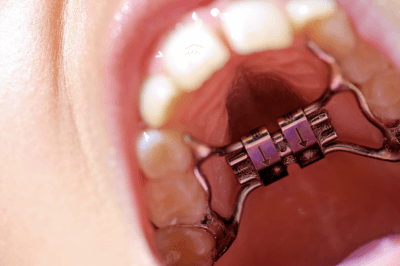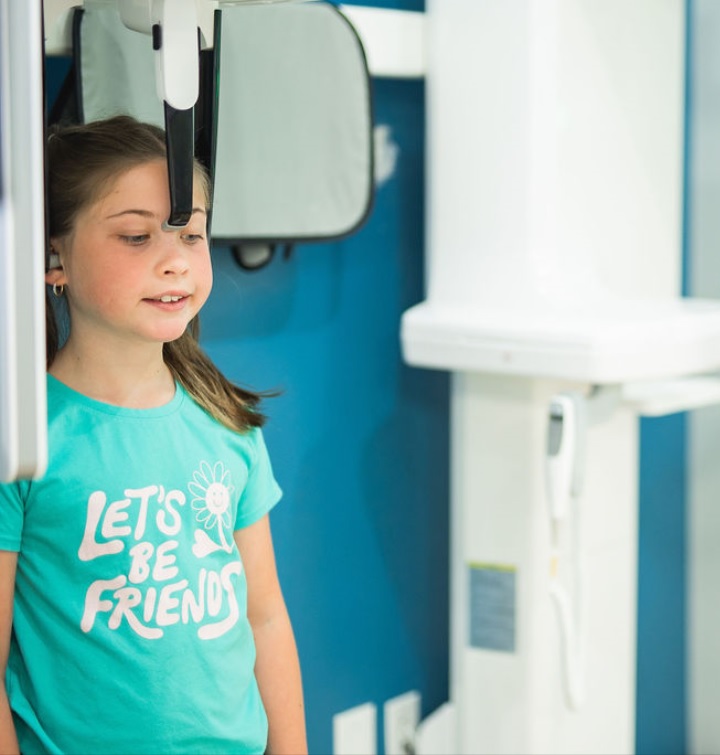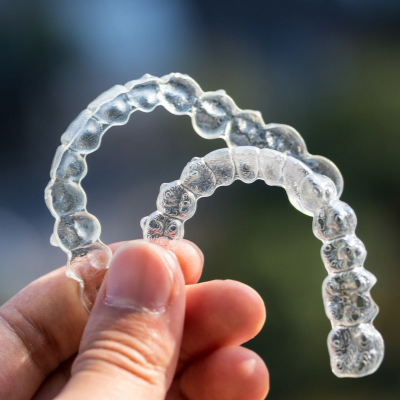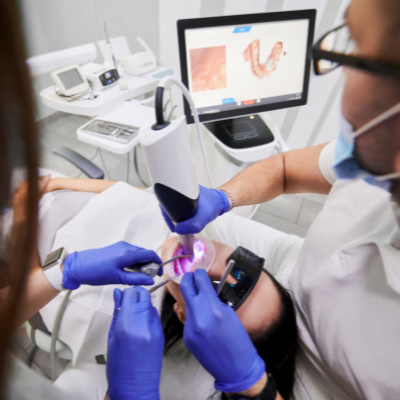Many parents don’t realize that early orthodontic intervention can resolve a considerable number of dental issues before they occur, particularly problems with crowding and alignment. That’s why most orthodontists recommend scheduling a child’s first appointment by the age of 7. If your child’s orthodontist detects potential issues with future tooth placement, they might recommend palatal expansion, a method of widening the circumference of the upper arch to create more space for teeth to grow.
While hearing a recommendation of palatal expansion may initially cause some degree of apprehension, understanding why the process is recommended and how results are achieved will likely alleviate your concerns.
How Palatal Expansion Works
Ideally, the upper jaw is wide enough to eventually accommodate the permanent teeth, but it doesn’t always work out that way. Some children develop a narrow upper palate. Since the bones of the upper jaw don’t completely fuse until sometime after puberty, a simple device, a palatal expander, can be used to safely expand the width of the upper jaw to ensure proper tooth placement. With treatment, the space between the palatal bones can be expanded and stabilized within a few months.
A palatal expander is a customized device that fits over several top teeth toward the back of the mouth. Most often, the appliance has two halves that meet in the center. In the center of the device, a screw controls movement. Parents insert a key to turn the screw and gently expand the space between the two palatal bones. The pressure is typically adjusted once each day for a few weeks until the desired correction is achieved. Once the palate is expanded, the appliance is left in place for several months as bone fills the gap created by the device, and the expansion is stabilized. Expanders are generally worn for a total of 3-6 months.
Concerns That Benefit From Palatal Expansion
For best results, palatal expansion is initiated before or during a growth spurt. With more space created in the upper palate, many common orthodontic issues can be improved or prevented. Palatal expansion is most often recommended for the following concerns:
- Crowding
Your child’s orthodontist can tell if there will likely be enough space to accommodate their adult teeth long before those teeth erupt. If it appears that the shape of your child’s mouth will eventually lead to crowding, widening the available space can eliminate the need to pull teeth before treatment with orthodontic braces or reduce the number of teeth that need to be removed.
- Impacted Teeth
Widening the upper jaw can also free teeth unable to work their way through the gums because of other teeth blocking their movement. When more space is created through palatal expansion, formerly impacted teeth shift into their proper position on their own.
- Crossbite
When the upper jaw is too narrow to fit together with the lower jaw, the top back teeth may bite inside the lower teeth rather than on the outside, causing a crossbite. This type of crossbite is easily corrected with palatal expansion. To realign a crossbite, the appliance should be placed as soon as possible, but typically no earlier than the age of five.
Increasing the available space of the upper jaw can also improve breathing, eliminate the need for braces, or reduce the amount of time invested in future orthodontic treatment. If additional space is also needed on the lower jaw, and expander will create space by shifting the teeth, not the bone.
Palatal expansion is a simple, effective method of expanding the width of the palate to accommodate placement, minimize crowding, and reposition a crossbite. Since timing has a significant impact on the overall effect, most orthodontists recommend scheduling an initial appointment by the age of seven. Early intervention can reduce the need for more extensive orthodontic treatment as your child grows.
If your child is ready for their first orthodontic appointment, schedule a complimentary consultation with us! Dr. Glass will help answer any questions you may have. We look forward to seeing you!




